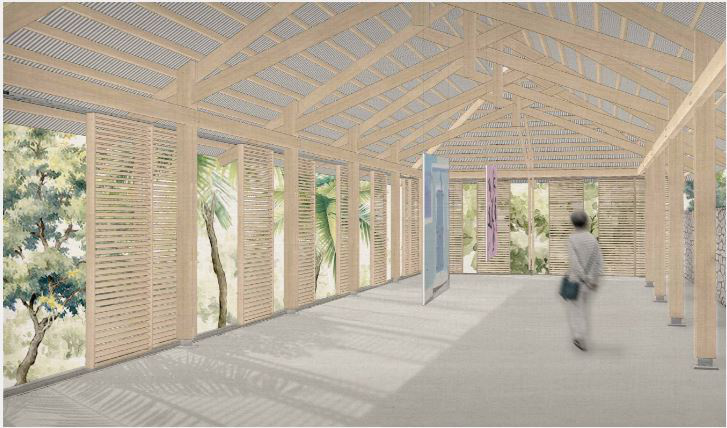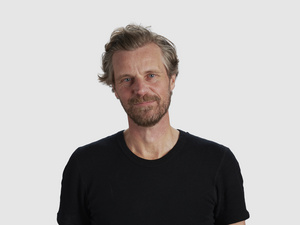In February, 10 architecture students travelled to the old Danish colonies in the West Indies to study how buildings from colonial times can be restored to serve both cultural heritage and the people of the West Indies. But how do you do that without repeating the sins of the past? They are currently exhibiting their proposals at the West Indian Cultural Embassy.
There is an unmistakable sense of ‘Danishness’ in the old urban districts of Saint Thomas. The colours, the smells and the temperatures are unequivocally Caribbean, but nonetheless there is no denying the island’s Danish history. It is contained in the street names and on signs, and is visible in the cobbled alleys and brick buildings. Danish colonial rule has left its traces. But these traces are in danger of disappearing, because many of the colonial buildings are empty and threatened by decay. This is a cultural loss for the West Indian population, which today is made up of a complex ethnic group, whose sense of identity draws on a wealth of different cultures. That includes Danish culture.
From military hospital to museum
That is why, in spring 2016, 10 students from KADK’s Cultural Heritage, Transformation and Restoration programme travelled to Saint Thomas to take a close look at the condition of some of the old buildings, and to examine how they can be restored to serve both the people of the West Indies and the cultural heritage shared by the two countries. The specific project, which was set up to mark the centenary of the handover of the islands next year, was to transform a former, extremely dilapidated Danish military hospital on the island into a modern, state-of-the-art museum. Now the students are exhibiting their models and drawings at the West Indian Cultural Embassy in the Frederiksberg district of Copenhagen.
Anchored in the local population
“Of course, the main aim of the project was to investigate how a piece of Danish cultural history can be preserved for posterity. But the buildings are also - for better or worse - an important part of the history of the people of the West Indies. That is why it was crucial to anchor the project in the local population. The students were very aware of the fact that they should not repeat the past, blowing their trumpets like neo-colonists with preconceived and pre-cast points of view,” says Nicolai Bo Andersen, an Associate Professor at KADK and head of the Cultural Heritage, Transformation and Restoration programme.
“That is why several of the students’ projects are more like community centres, which encourage interaction and active participation, rather than closed museum spaces where you can observe a letter in a display case,” says Nicolai Bo Andersen. At the same time, he stresses how important it was for the students to create a physical framework that acknowledges the fact that there are more layers at work in the overall history of the West Indies than those created by Denmark.
.
.

Native American inspirations
One example is Rosita Jansen’s project, which draws on several aspects of West Indian history and cultural heritage. Rosita Jansen has designed an annexe constructed of lightweight materials, which is redolent of the huts of the Taino Indians: complete with hammocks and lightweight sliding doors. It refers to the island’s Colombian era. She proposes restoring the old military hospital back to what it originally looked like as a representation of the Danish colonial period. Finally, she adds a brand new building to reflect the island’s most recent American history.
“Restoration and transformation is not just about preserving and restoring. You have to recognise that history is composed of many layers. Some old buildings need to be lovingly restored, while others need to be transformed and reinterpreted. The way we use the buildings should make sense to today’s local population. We can help save cultural heritage with our knowledge and expertise, but it must be done on their terms.”
The exhibition at the West Indian Cultural Embassy runs until 1 February.
Facts about the project - In Search for Identity
2017 is the centenary of Denmark’s transfer of the Danish West Indian Islands to the United States. In Search of Identity is a collaborative project between Denmark and the United States Virgin Islands (USVI). It is all about creating greater awareness of history and identity. In February, a group of students from the Aarhus School of Architecture and KADK’s Cultural Heritage, Transformation and Restoration programme travelled to the United States Virgin Islands (USVI) to measure and record an old military barracks in Christianssted on Saint Croix and a former military hospital in Charlotte Amalie on Saint Thomas. During the spring, the students worked on projects for the transformation and restoration of the two buildings. The plan is to use the buildings in the future as an arts and crafts school and a cultural centre. The students’ projects will form the basis for a funding application to finance the future development of the two buildings.



